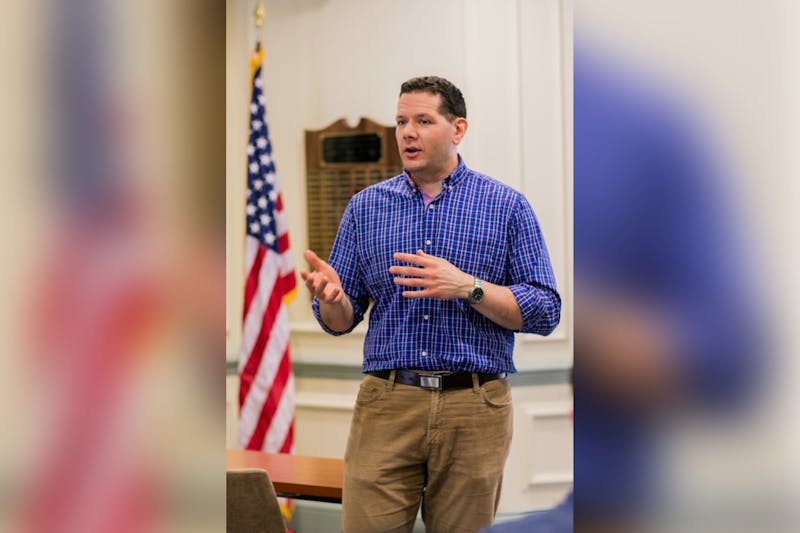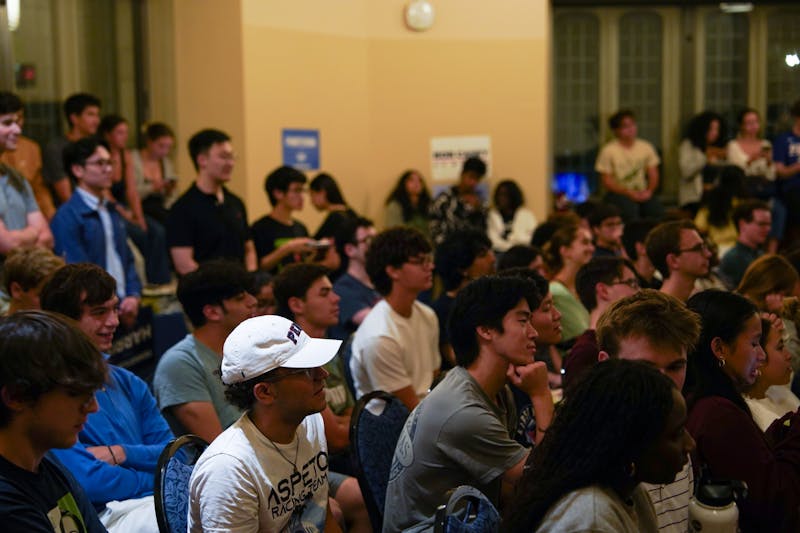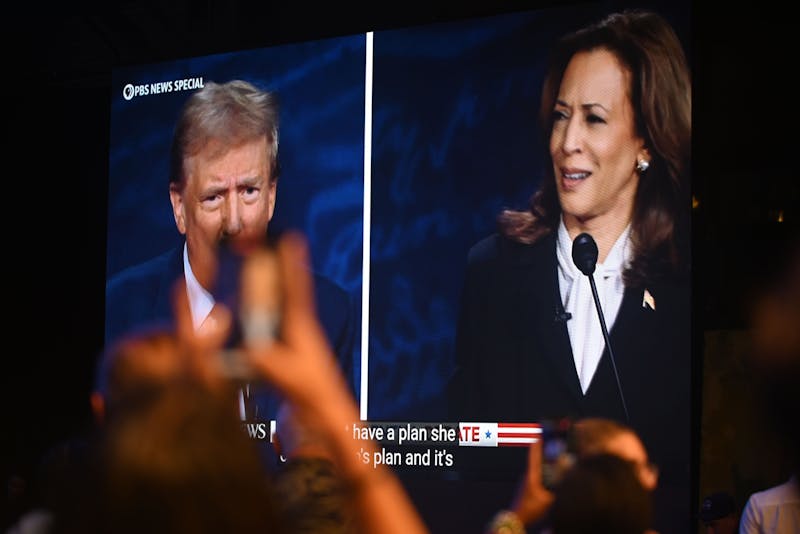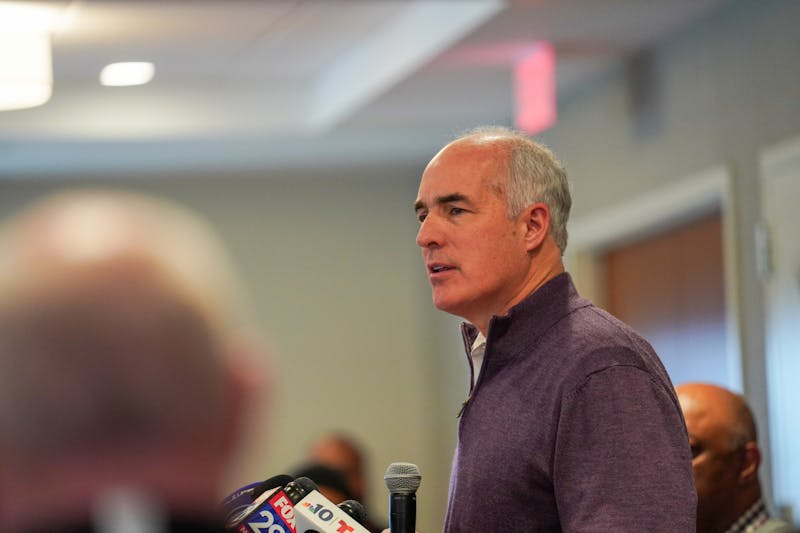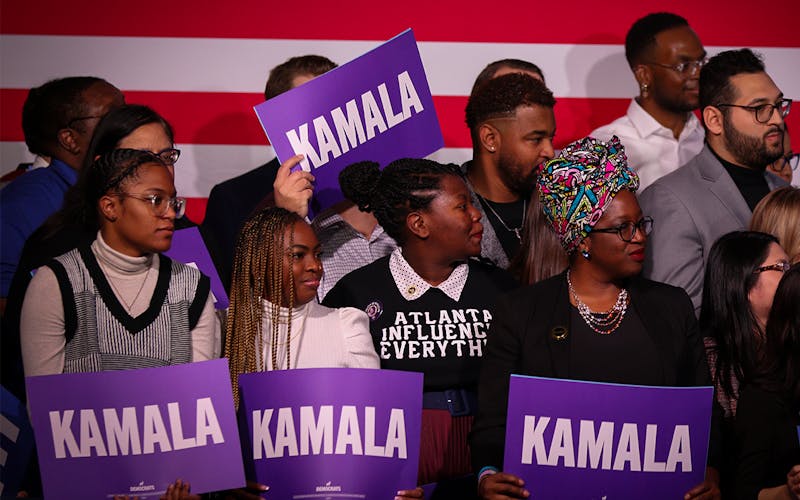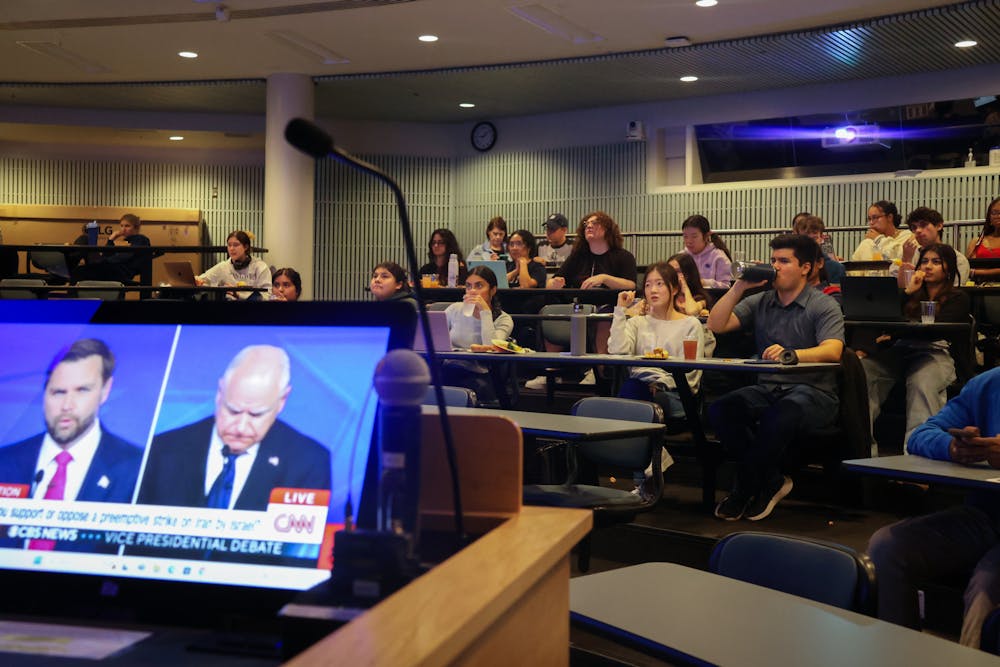
The Annenberg School for Communication and Penn Democrats hosted watch parties for the vice presidential debate between Minnesota Gov. Tim Walz and Sen. JD Vance (R-Ohio) on Tuesday evening.
Penn students gathered at the Annenberg School and in Huntsman Hall to watch Walz and Vance discuss various issues during the 90-minute debate, including the Middle East, Hurricane Helene, immigration, the economy, and reproductive rights. Throughout the course of the debate, the Wharton School — specifically, the Penn Wharton Budget Model — was mentioned three times.
Approximately 100 University community members attended the watch party at the Annenberg School, where refreshments were provided. The debate was streamed on varying news stations in different classrooms in the building. The Penn Dems watch party — hosted at Huntsman Hall — attracted over 65 attendees and was organized in collaboration with Vice President Kamala Harris' presidential campaign and the Pennsylvania Democratic Party.
Penn Leads the Vote had a voter registration table at the Annenberg School's entrance, where students could check their voter registration to be entered into a raffle. Around four students registered to vote, according to Annenberg School Senior Director of Marketing and Communications Mandira Banerjee. Viewers could also fill out bingo cards, and were able to check off boxes if former President and 1968 Wharton graduate Donald Trump or Taylor Swift were mentioned, or upon hearing the words “hillbilly energy.”
During the economic policy portion of the debate, moderator Norah O’Donnell asked both vice presidential candidates how they would enact their campaign's economic promises without increasing the national deficit, citing the PWBM. The same studies were mentioned by Harris and Trump during the presidential debate on Sept. 10 in Philadelphia.
O’Donnell asked Walz how Harris’ proposed tax credits for manufacturing, housing, and a renewed child tax credit will be funded, considering the PWBM predicts Harris’ proposals will increase the national deficit by $1.2 trillion. She also asked Vance the same question, explaining that the PWBM predicts former President Donald Trump’s plan will increase the deficit by $5.8 trillion.
“A lot of those same economists attack Donald Trump's plans, and they have Ph.D.s, but they don't have common sense and they don't have wisdom, because Donald Trump's economic policies delivered the highest take-home pay in a generation in this country,” Vance said in response.
Later in the debate, Walz seemed to cite findings from the PWBM when discussing the Harris campaign's childcare tax credit policies and how Trump’s economic policy will impact the middle class.
“That's the Wharton School. That's his alma mater,” Walz said.
In its brief released in August, PWBM wrote that "[t]he Harris campaign proposals would reduce taxes on low- and middle-income households by expanding" tax credit policies and assistance for homebuyers and those covered under the Affordable Care Act.
Mentions of Wharton were one of multiple moments that elicited reactions from both audiences. At the Penn Dems watch party, each mention was met with applause and cheers from the attendees at the watch party.
Audience members at both watch parties reacted with groans and laughter to Vance's mentions of his working-class upbringing, as well as claims about immigration policies and undocumented immigrants. The crowds also reacted when Walz was questioned about his claim of being in Hong Kong during the Tiananmen Square protests in China during the spring of 1989 — with some audibly gasping and visibly cringing when Walz said he "misspoke."
Students at both watch parties noted the mostly nonargumentative nature of the debate.
“It was a bit odd to see how much both candidates were constantly agreeing with each other, which isn’t really usual considering how partisan politics is today,” College senior Michael Palacios, who is a former staffer at The Daily Pennsylvanian, said. Palacios attended the Annenberg School watch party.
College sophomore and Penn Dems Communications Director Steve Yang, who attended the Penn Dems watch party, said "This more cordial tone is what we need to return to" in future debates.
College junior and Penn Dems Secretary Eunho Jung agreed, but said she was "surprised" at Walz's restraint in rebuttals against Vance — specifically given Vance's claims about Haitian immigrants in Ohio.
“I really thought he was going to set the record straight, but he didn’t," Jung said. "I kind of wish he did, based on the horrendous things that JD Vance and Donald Trump have been saying.”
On the other hand, College first year Raeva Patwardhan, who attended the Annenberg School watch party for her "Introduction to Political Communication" course, said the debate felt more like "an insult battle."
Annenberg Public Policy Center Director and Elizabeth Ware Packard Professor of Communication Kathleen Jamieson also noted the relative cordiality during the Oct. 1 debate.
“This debate give viewers the opportunity to compare the candidates' biographies, records, and issue positions, observe their temperament and communication styles, and draw inferences from dodged questions,” Jamieson wrote in a statement to the DP. “Only rarely do debates feature areas of agreement between candidates. This one was a refreshing exception.”
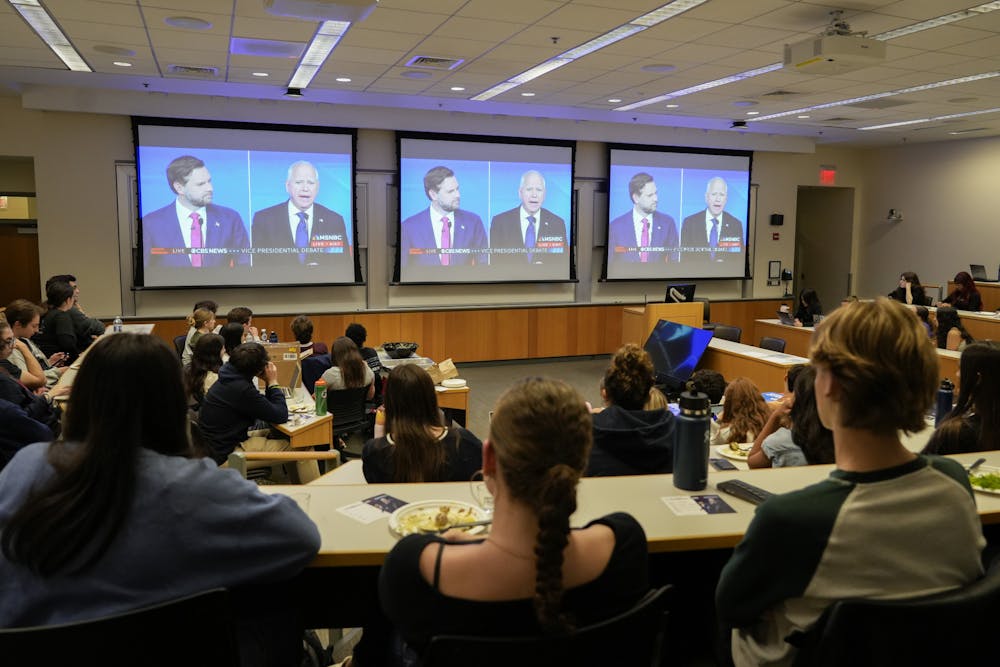
Historically, vice presidential debates have resulted in negligible shifts in voter opinion. Jung said she was "not optimistic about this debate … swaying anyone's opinions this close to the election."
College first year Hope Nasatir said she hoped to understand the views of each vice presidential candidate “a little bit better” and “just be entertained” over the course of the debate. She also hoped Walz and Vance would discuss abortion, an issue that is important to her.
“I know who I’m going to vote for. I don’t know if [the debate] will really sway students,” she said.
The Daily Pennsylvanian is an independent, student-run newspaper. Please consider making a donation to support the coverage that shapes the University. Your generosity ensures a future of strong journalism at Penn.
Donate







